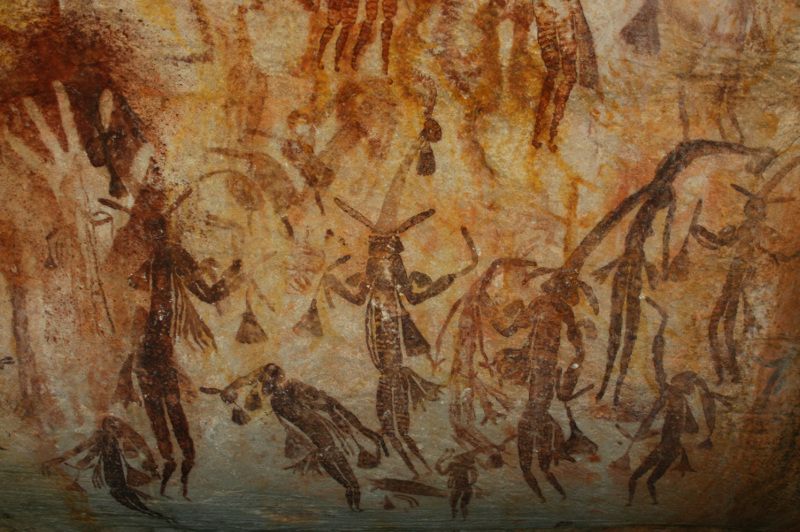When I was writing recently about art being a form of self-portrait, a record of where each artist is in time and space and outlook in life, I remembered another statement, this time by Leonardo daVinci. He said, "Every painter paints himself. Painters seem to paint their own faces and make paintings that seem directly involved with their own life. " Indeed, there has been much speculation about many of Leonardo's portraits using his own features, such as this video of Siegfried Woldhek talking about his search for Leonardo's self-portraits. This image is the most famed, done between 1512-15 in red chalk, when Leonardo was in his sixties, a drawing in the Royal Library of Turin.
Self-Portrait, Leonardo da Vinci, 1512-15 in red chalk drawing (Image courtesy of the Royal Library of Turin)
The urge to record one's own existence, one's presence, has been with us humans since time immemorial. This form of saying "I exist, I am present", in visual fashion, is testimony to mankind's sense of community, of shared characteristics that are more important than their differences, at least at some moments in our history. One of the most amazing collections of human representations is apparently becoming better known and understood in recent years - the GwionGwion rock paintings in the Kimberly area in N.W. Australia. Not only are these rock paintings probably more than 40,000 years old, but they tell of human life and adventures in stunning, elegant fashion.
Tassel Bradshaw (Gwion Gwion) figures wearing ornate costumes
Bradshaw figure, ( courtesy of the Bradshaw Foundation).
As examples of artwork that reveals the artist's own experience, in "self-portraiture" style, there is a red rock painting of a boat, the earliest known in history, that tells of man's migration to Australia via a four-man canoe on the Gwion Gwion rocks.
Bradshaw boat people, 40,000 years ago
There is also another long panorama of four-legged, antlered animals that the artist had evidently seen during the migration from SE Asia. There are no such animals, now or in early times, in Australia.
Gwion Gwion (Bradshaw) paintings on a rock wall.
Gwion Gwion cave paintings in the Kimberely
This huge collection of rock paintings, in hostile, difficult and remote terrain is an astounding example of man recording existence, beliefs, and ceremonies from very early times that one author, Jo Lennan, describes as "a forgotten Eden". The name, Gwion Gwion, comes from a bird's name. The Aboriginal people recount that this bird pecked the rock with such force that its blood sprang forth and it used its bloodied beak and feather to delineate the elegant, dainty figures. Indeed, it is thought by today's experts that these long-ago artists actually used quills to make the fine lines on the rocks. The actual dates of these early artists' work are still being determined, because the pigments used to draw have become part of the rocks themselves, and carbon dating doesn't work, especially in the tropics where its limits of dating go back +-40,000 years. Nonetheless, apparently on top of one drawing, there is a fossilised mud wasp's nest, and optical luminescence (which dates when something last saw the light of the sun) allowed a date of about 17,500 years for the drawing. This means that these artists were telling of themselves and their world at the same time as their long-distant colleagues were painting the wonderful images of their immediate universe on the cave walls in Lascaux, France.
What marvels we all inherit when such artists create "self-portraits" of their personal worlds.





